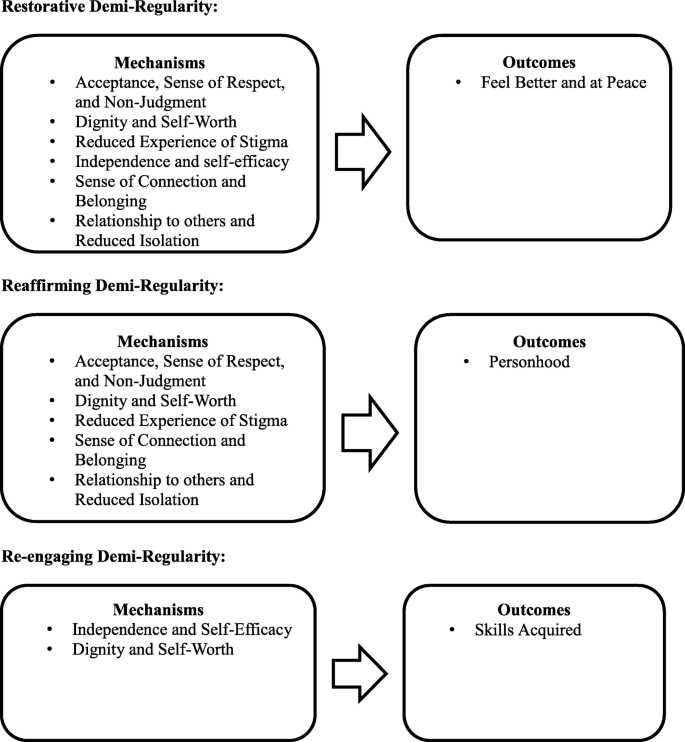Called Client-Directed Outcome-Informed therapy (CDOI), this approach has actually been made use of by a number of drug treatment programs, such as Arizona's Department of Health Solutions. Psychoanalysis, a psychotherapeutic approach to habits change established by Sigmund Freud and modified by his fans, has also offered a description of substance abuse. This orientation recommends the primary reason for the dependency syndrome is the unconscious requirement to entertain and to enact different sort of homosexual and perverse dreams, and at the same time to avoid taking obligation for this.
The addiction syndrome is likewise hypothesized to be related to life trajectories that have actually taken place within the context of teratogenic procedures, the phases of which include social, cultural and political factors, encapsulation, traumatophobia, and masturbation as a type of self-soothing. Such a method depends on stark contrast to the approaches of social cognitive theory to addictionand indeed, to behavior in generalwhich holds people to control and manage their own ecological and cognitive environments, and are not simply driven by internal, driving impulses.
An influential cognitive-behavioral technique to addiction recovery and treatment has been Alan Marlatt's (1985) Regression Avoidance approach. Marlatt explains four psycho-social processes pertinent to the addiction and relapse procedures: self-efficacy, outcome expectancy, attributions of causality, and decision-making processes. Self-efficacy refers to one's ability to deal properly and effectively with high-risk, relapse-provoking situations.
Attributions of causality refer to a person's pattern of beliefs that relapse to substance abuse is a result of internal, or rather external, short-term causes (e.g., permitting oneself to make exceptions when faced with what are judged to be unusual scenarios). Lastly, decision-making processes are linked in the relapse procedure too.
In addition, Marlatt worries some decisionsreferred to as apparently unimportant decisionsmay appear irrelevant to relapse, however might really have downstream ramifications that put the user in a high-risk scenario. For instance: As an outcome of rush hour, a recovering alcoholic may choose one afternoon to exit the highway and travel on side roadways.
If this person is able to utilize effective coping techniques, such as sidetracking himself from his cravings by switching on his favorite music, then he will avoid the relapse danger (PATH 1) and heighten his efficacy for future abstaining. If, nevertheless, he lacks coping mechanismsfor circumstances, he might begin pondering on his cravings (PATH 2) then his effectiveness for abstinence will reduce, his expectations of positive results will increase, and he may experience a lapsean separated return to substance intoxication.
The Definitive Guide for What Does Drug Rehab Cost
This is an unsafe path, Marlatt proposes, to full-blown relapse. An additional cognitively-based design of substance abuse recovery has actually been provided by Aaron Beck, the father of cognitive treatment and championed in his 1993 book Cognitive Treatment of Substance Abuse. This treatment rests upon the presumption addicted people have core beliefs, often not accessible to immediate awareness (unless the patient is likewise depressed).

Once yearning has been activated, permissive beliefs (" I can deal with getting high just this one more time") are assisted in. As soon as a permissive set of beliefs have actually been activated, then the individual will trigger drug-seeking and drug-ingesting behaviors. The cognitive therapist's task is to reveal this underlying system of beliefs, analyze it with the patient, and therefore show its dysfunction.
Thinking about that nicotine and other psychedelic substances such as cocaine trigger comparable psycho-pharmacological pathways, a feeling guideline method may apply to a large range of substance abuse. Proposed models of affect-driven tobacco use have concentrated on unfavorable reinforcement as the main driving force for addiction; according to such theories, tobacco is utilized since it helps one escape from the unfavorable impacts of nicotine withdrawal or other negative moods.
Mindfulness programs that encourage patients to be aware of their own experiences in today minute and of emotions that develop from ideas, appear to prevent impulsive/compulsive actions. Research likewise shows that mindfulness programs can reduce the usage of compounds such as alcohol, drug, amphetamines, cannabis, cigarettes and opiates. For example, somebody with bipolar disorder that struggles with alcohol addiction would have dual diagnosis (manic depression + alcohol addiction).
According to the National Survey on Substance Abuse and Health (NSDUH), 45 percent of individuals with addiction have a co-occurring psychological health condition. Behavioral designs utilize principles of functional analysis of drinking habits. Behavior models exist for both working with the substance abuser (neighborhood reinforcement method) and their household (neighborhood support technique and household training) - how to get insurance to pay for drug rehab.
This model lays much emphasis on the use of analytical strategies as a method of helping the addict to conquer his/her addiction. Despite ongoing efforts to fight dependency, there has been proof of centers billing patients for treatments that may not guarantee their healing. This is a major issue as there are various claims of scams in drug rehab centers, where these centers are billing insurer for under providing much needed medical treatment while stressful clients' insurance coverage advantages.

How How Mnay Addicts Go Back The Drug After Rehab can Save You Time, Stress, and Money.
Under the Affordable Care Act and the Mental Health Parity Act, rehabilitation centers have the ability to costs insurance provider for substance abuse treatment. With long wait lists in limited state-funded rehab centers, questionable personal centers rapidly emerged. One popular model, referred to as the Florida Model for rehabilitation centers, View website is frequently slammed for deceptive billing to insurance provider.
Little attention is paid to patients in regards to dependency intervention as these patients have actually typically been understood to continue drug use throughout their stay in these centers. Because 2015, these centers have actually been under federal and state criminal examination. As of 2017 in California, there are only 16 investigators in the CA Department of Healthcare Providers examining over 2,000 certified rehab centers.
Partnership for Drug-Free Kids - Where Households Find Responses. Recovered 24 October 2017. Marlatt, G, Alan (2005 ). New York City City: The Guilford Press. pp. 81. ISBN 1-59385-176-6. Abuse, National Institute on Drug Abuse. " Concepts of Efficient Treatment". Schaler, Jeffrey Alfred (1997 ). "Dependency Beliefs of Treatment Michael Vick Providers: Factors Explaining Difference".
4 (4 ): 367384. doi:10 (how does outpatient http://deanjbiz209.timeforchangecounselling.com/the-6-minute-rule-for-why-did-demi-lovato-go-to-rehab drug rehab work).3109/ 16066359709002970. hdl:. ISSN 1476-7392. NIDA InfoFacts: Treatments Techniques for Drug Dependency National Institute on Drug Abuse (NIDA). Retrieved on 2010-08-17 Concepts of Drug Addiction Treatment National Institute on Substance Abuse (NIDA) > " Motivational Interviewing". SAMHSA. Archived from the original on 13 December 2012. Stitzer ML, Petry NM, Peirce J (2010 ).
Journal of Compound Abuse Treatment. 38 Suppl 1: S619. doi:10.1016/ j.jsat. 2009.12.010. PMC. PMID 20307797. Scott, William C.; Kaiser, David; Othmer, Siegfried; Sideroff, Stephen I. (7 July 2009). "Impacts of an EEG Biofeedback Procedure on a Mixed Substance Abusing Population". The American Journal of Alcohol And Drug Abuse. 31 (3 ): 45569.
PMID 16161729. Dehghani-Arani, Fateme; Rostami, Reza; Nadali, Hosein (20 April 2013). " Neurofeedback Training for Opiate Dependency: Enhancement of Mental Health and Yearning". Applied Psychophysiology and Biofeedback. 38 (2 ): 133141. doi:10.1007/ s10484-013-9218-5. PMC. PMID 23605225 (how to start a drug rehab house). Arani, Fateme Dehghani; Rostami, Reza; Nostratabadi, Masoud (July 2010). "Efficiency of Neurofeedback Training as a Treatment for Opioid-Dependent Clients".
The 7-Second Trick For How To Choose A Drug Rehab Facility
41 (3 ): 170177. doi:10.1177/ 155005941004100313. PMID 20722354. Dalkner, Nina; Unterrainer, Human F.; Wood, Guilherme; Skliris, Dimitris; Holasek, Sandra J.; Gruzelier, John H.; Neuper, Christa (26 September 2017). " Short-term Beneficial Results of 12 Sessions of Neurofeedback on Avoidant Character Accentuation in the Treatment of Alcohol Usage Condition". Frontiers in Psychology. 8: 1688.